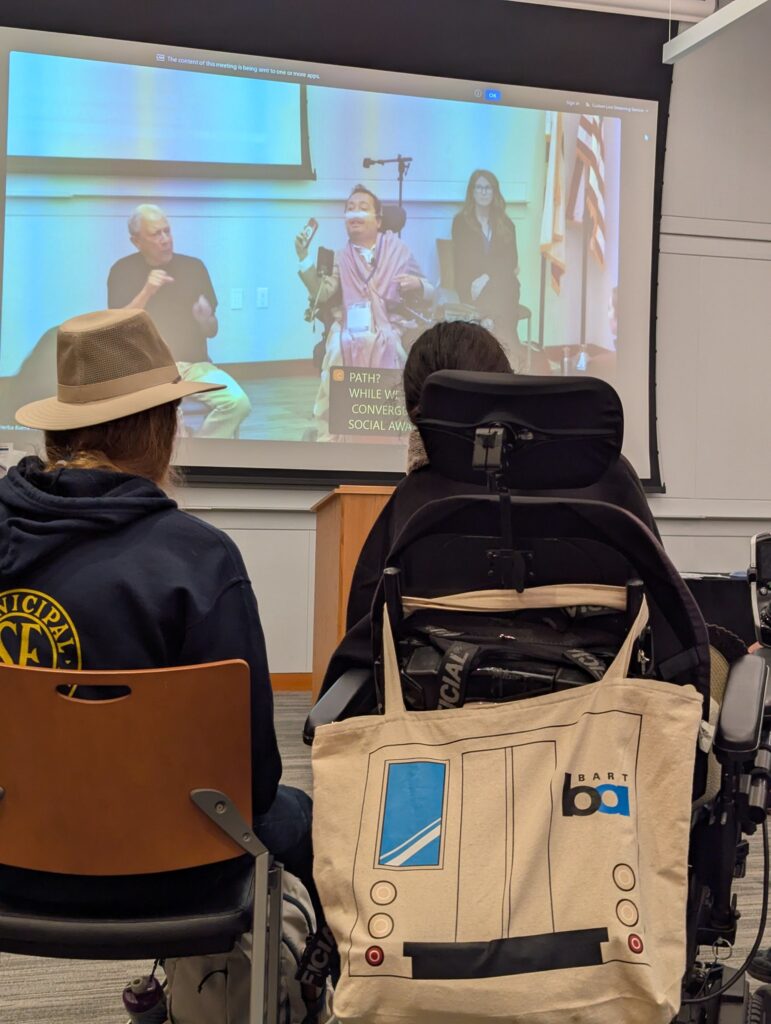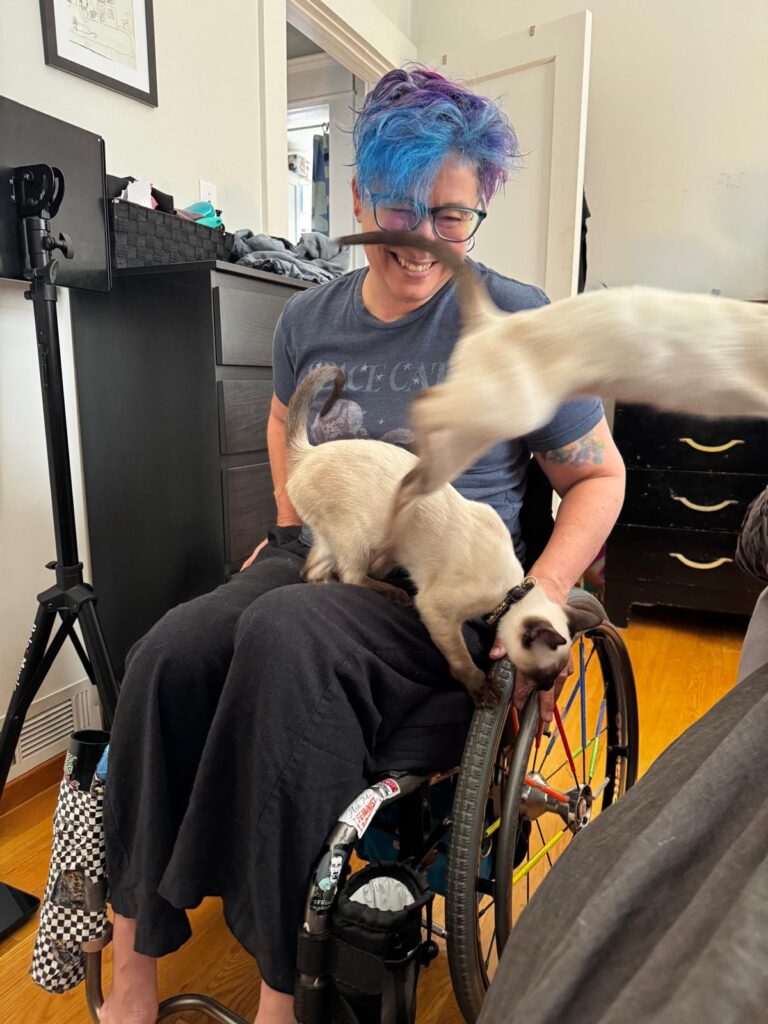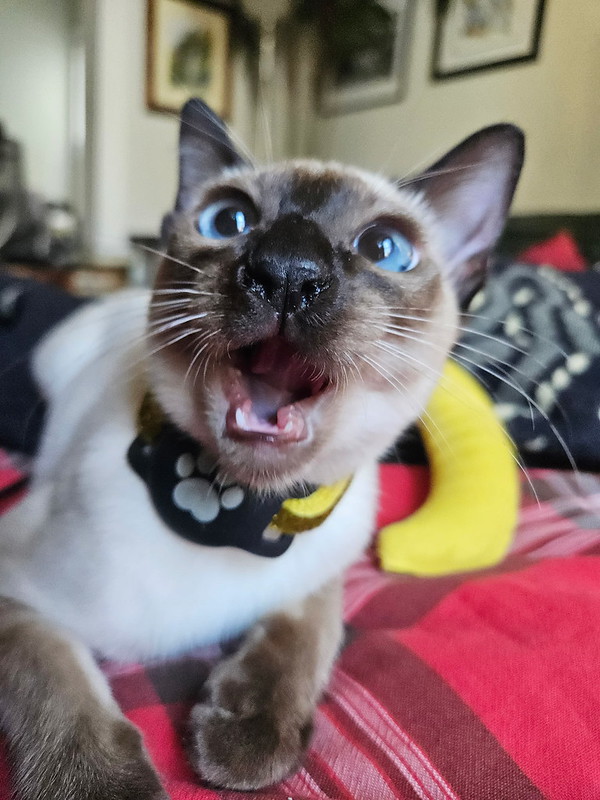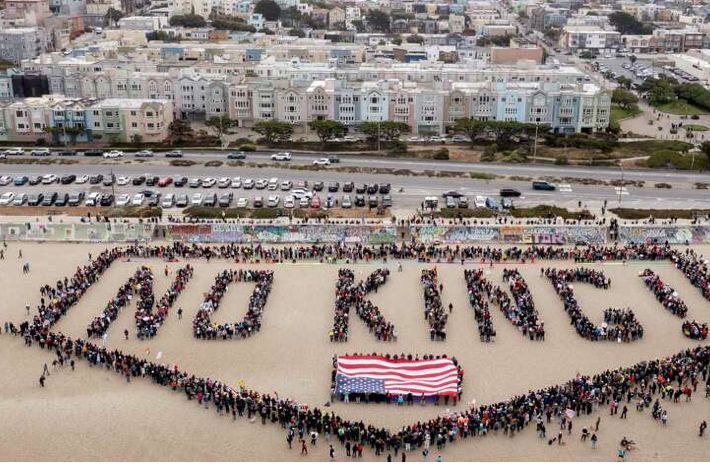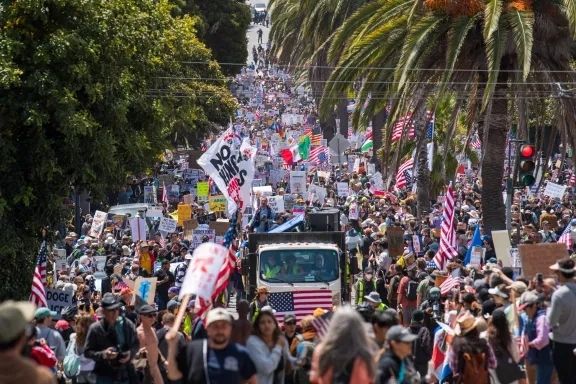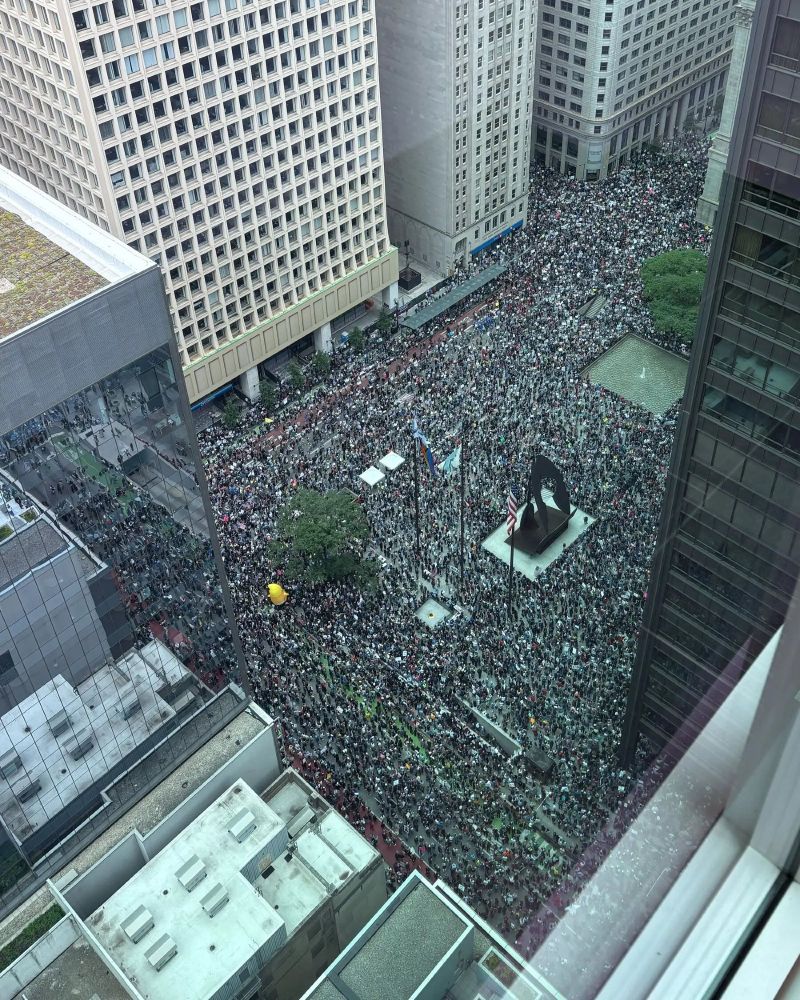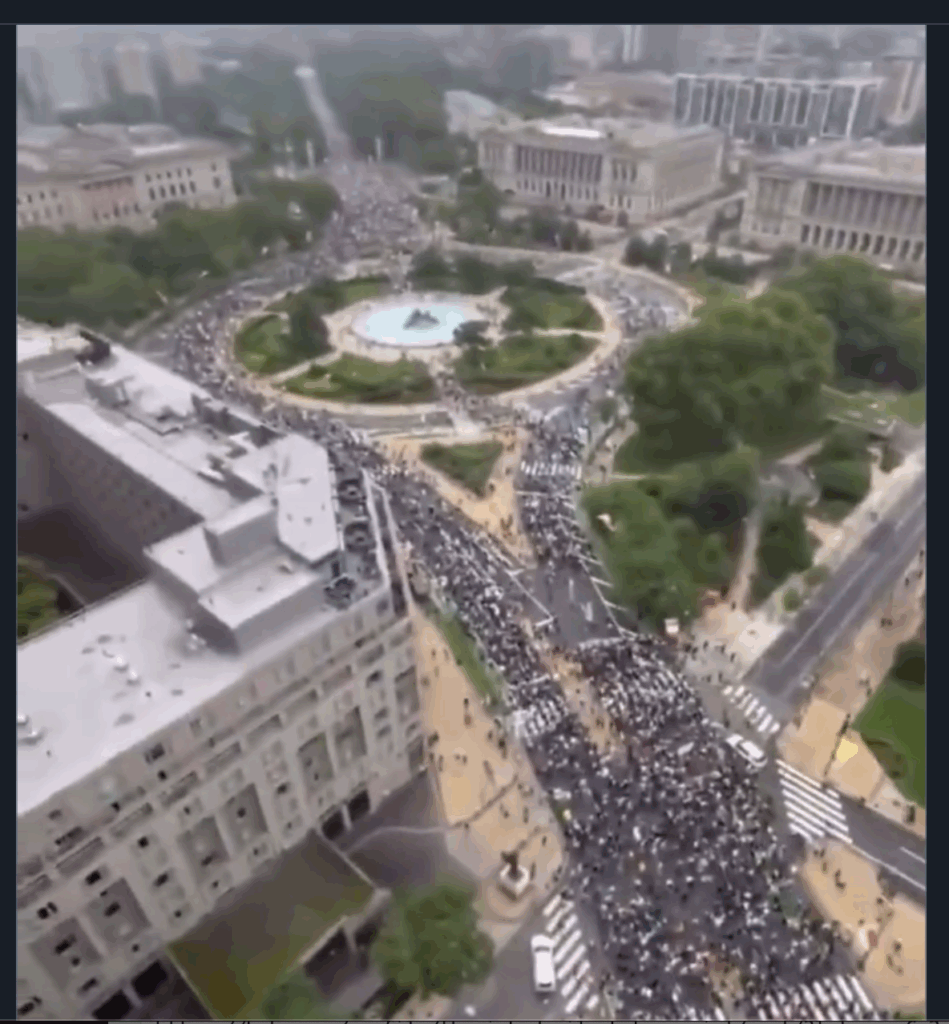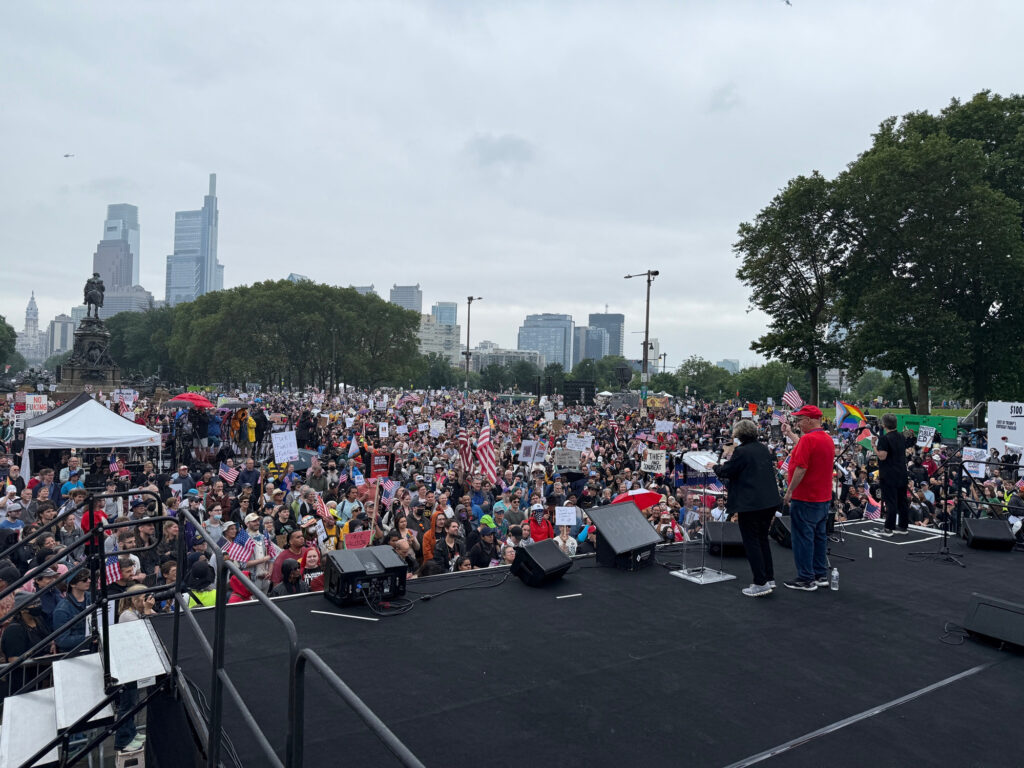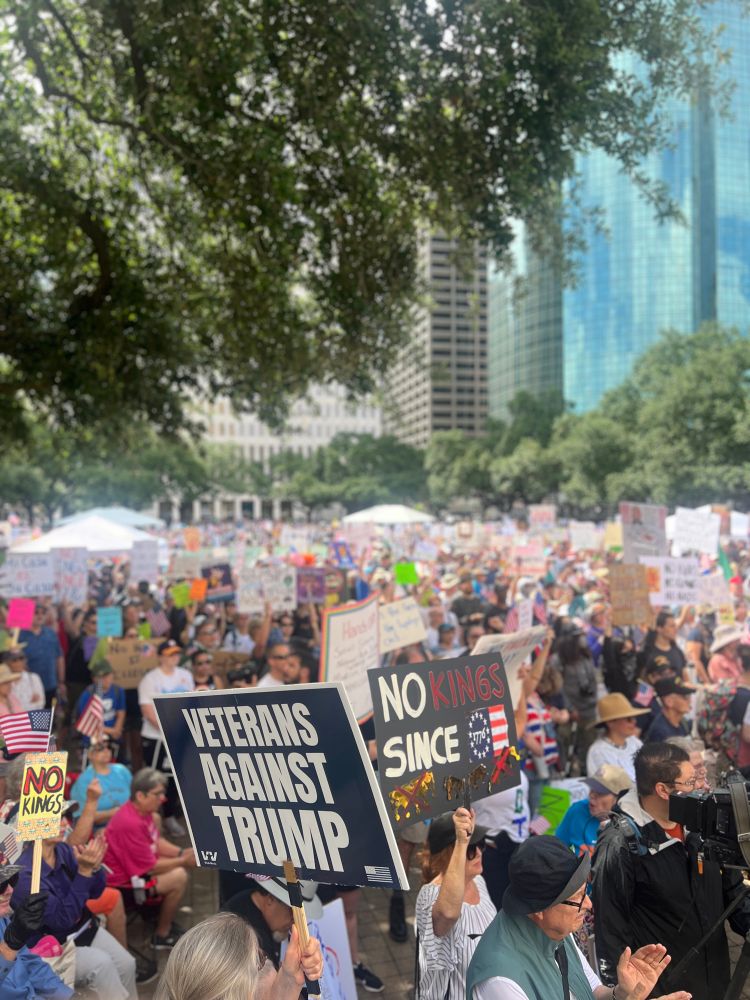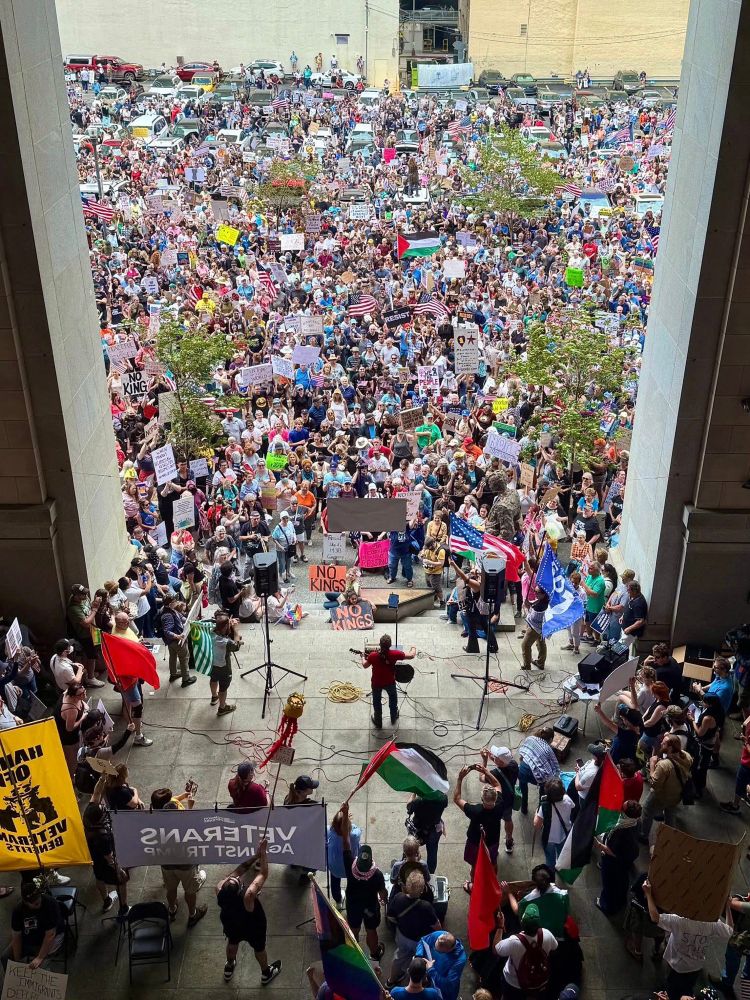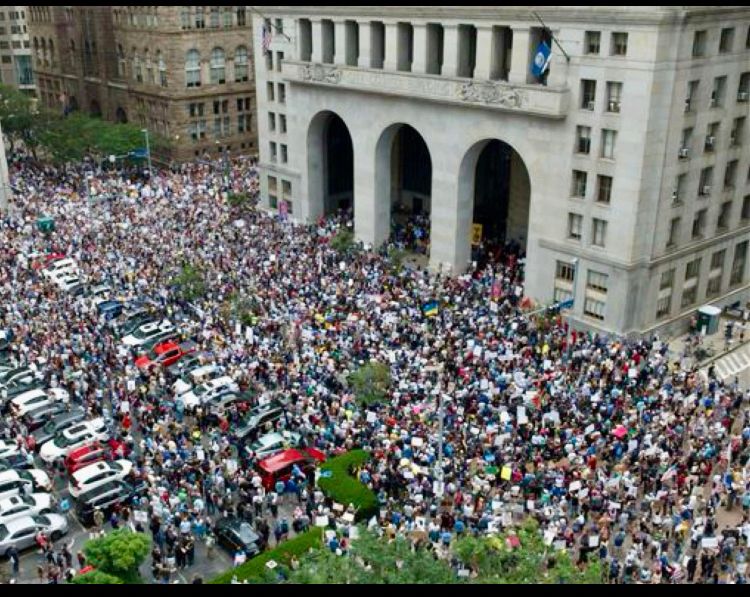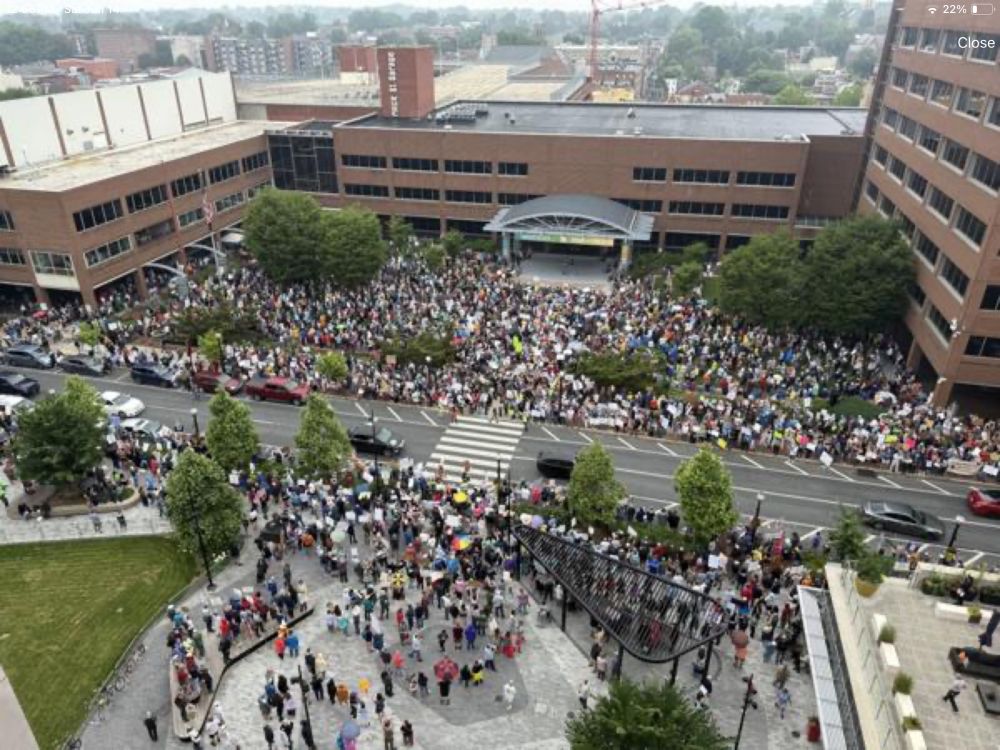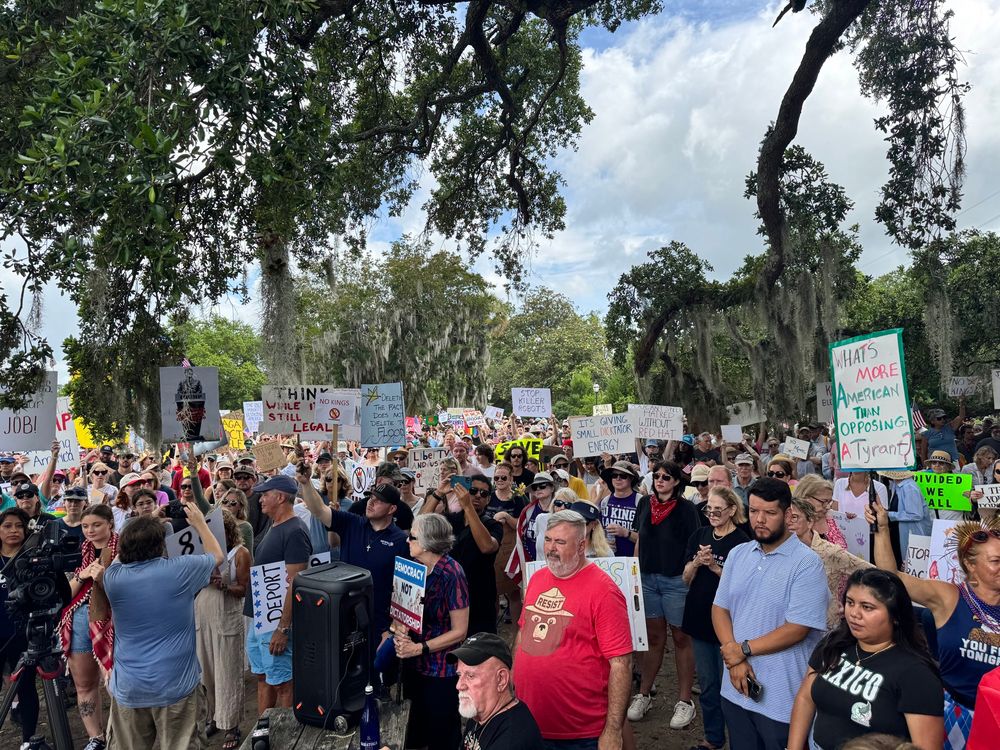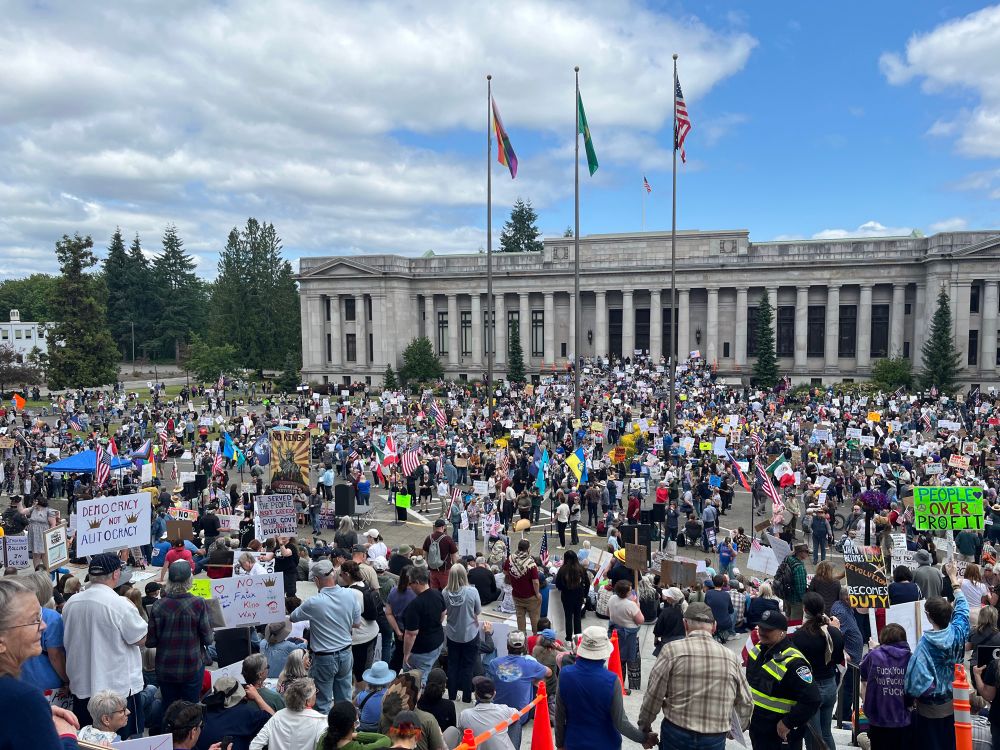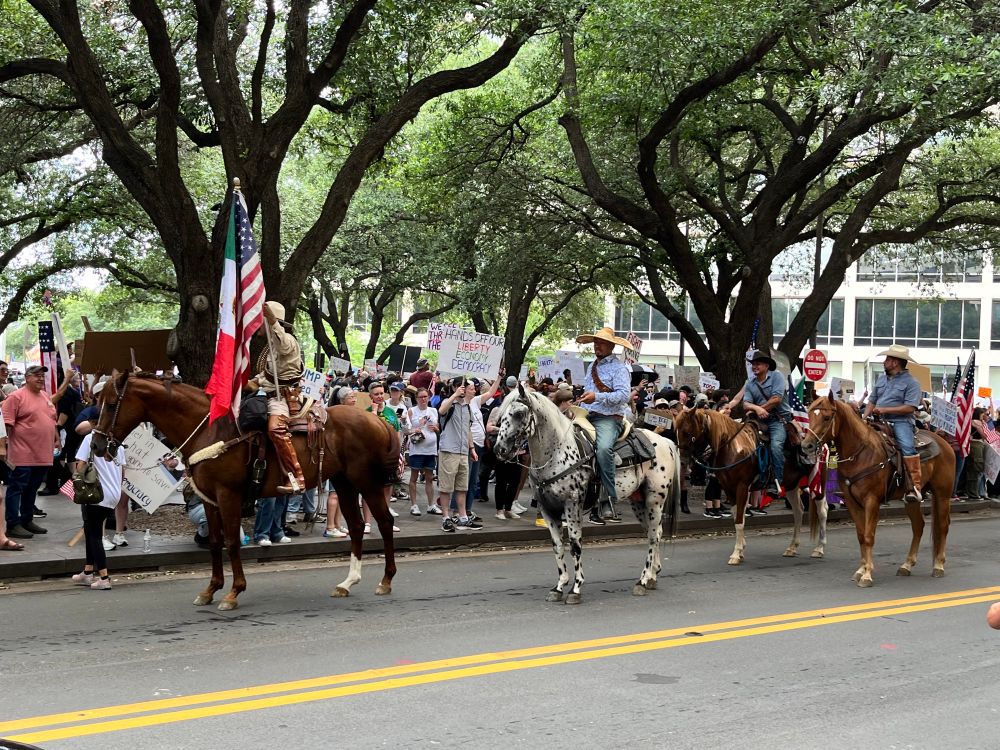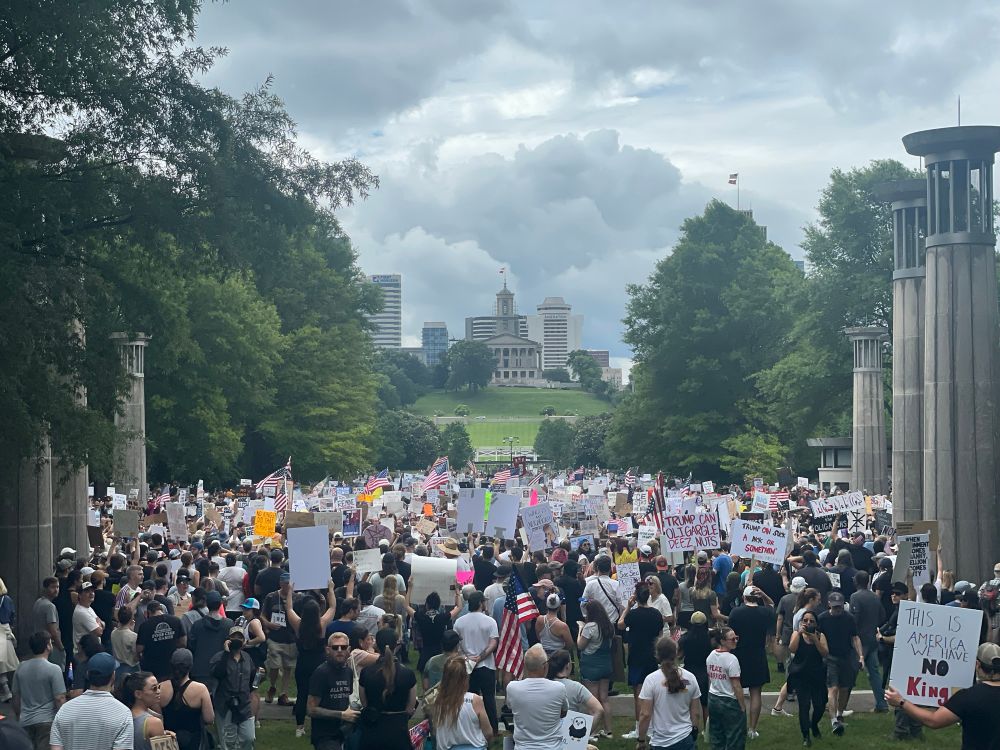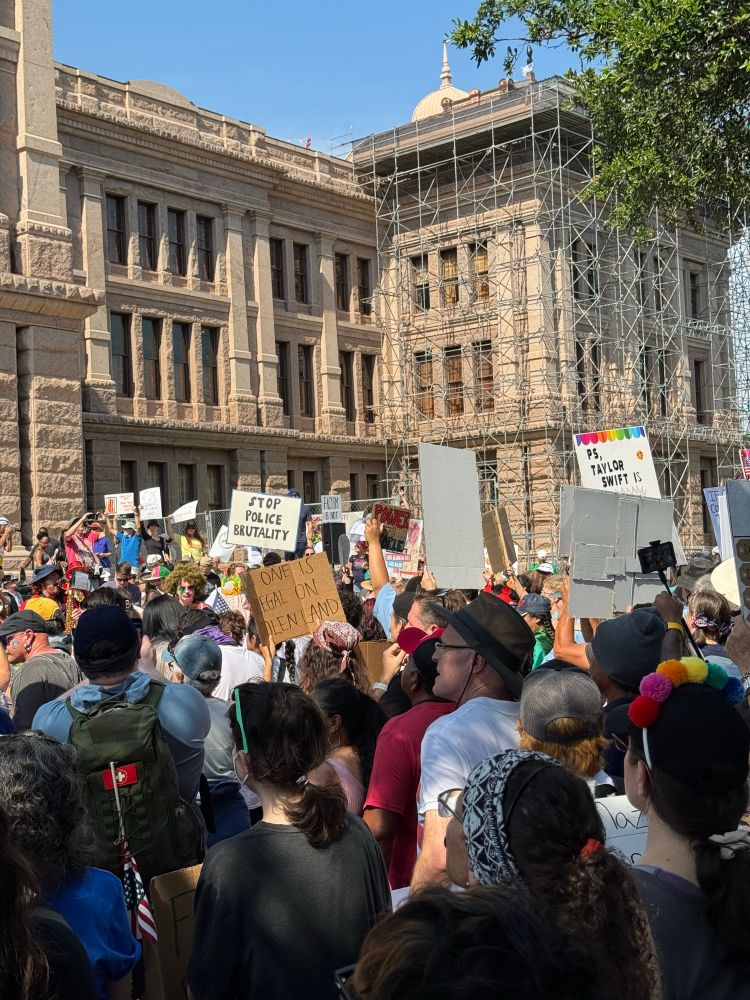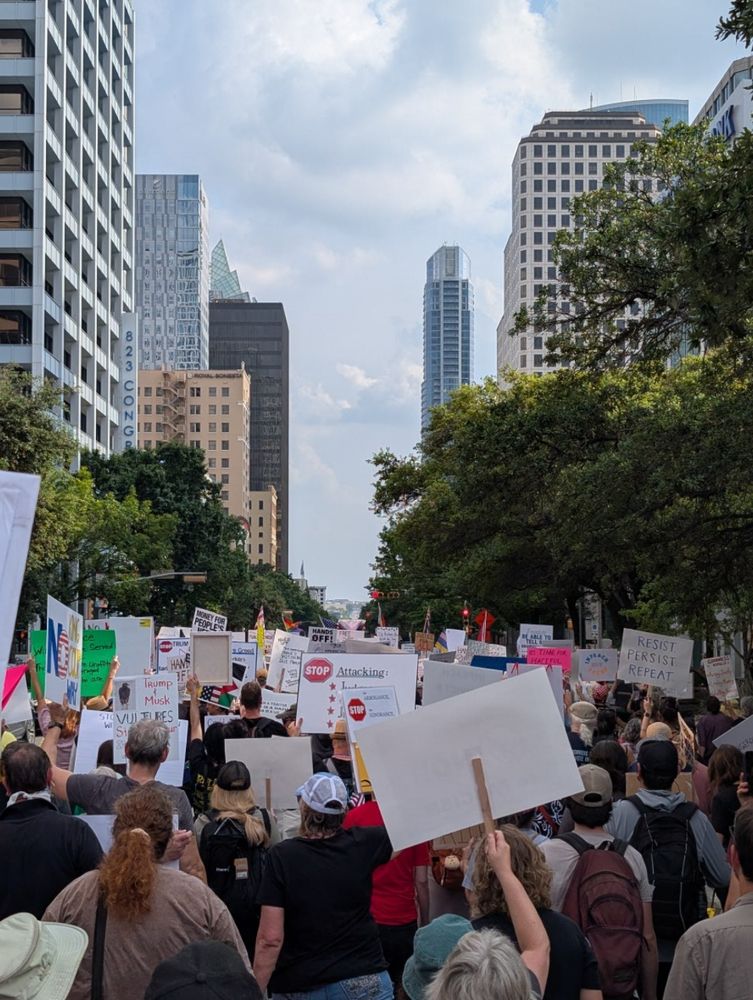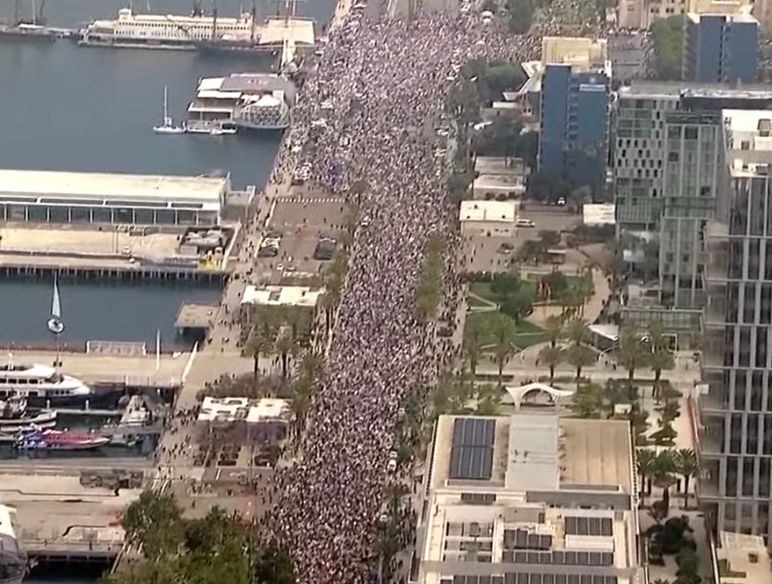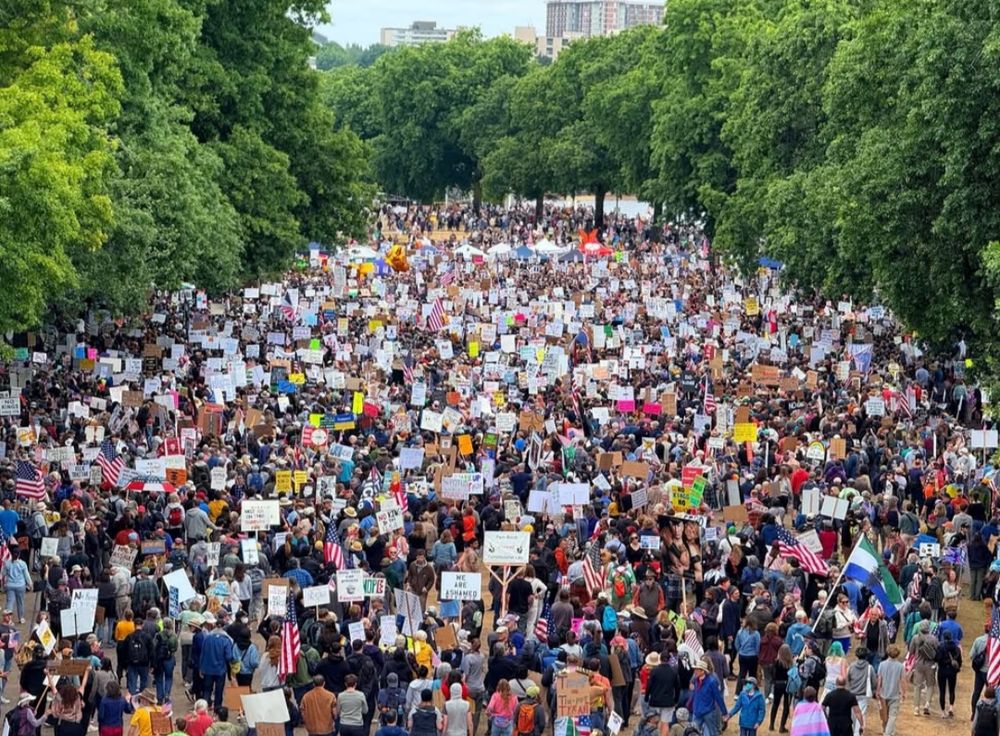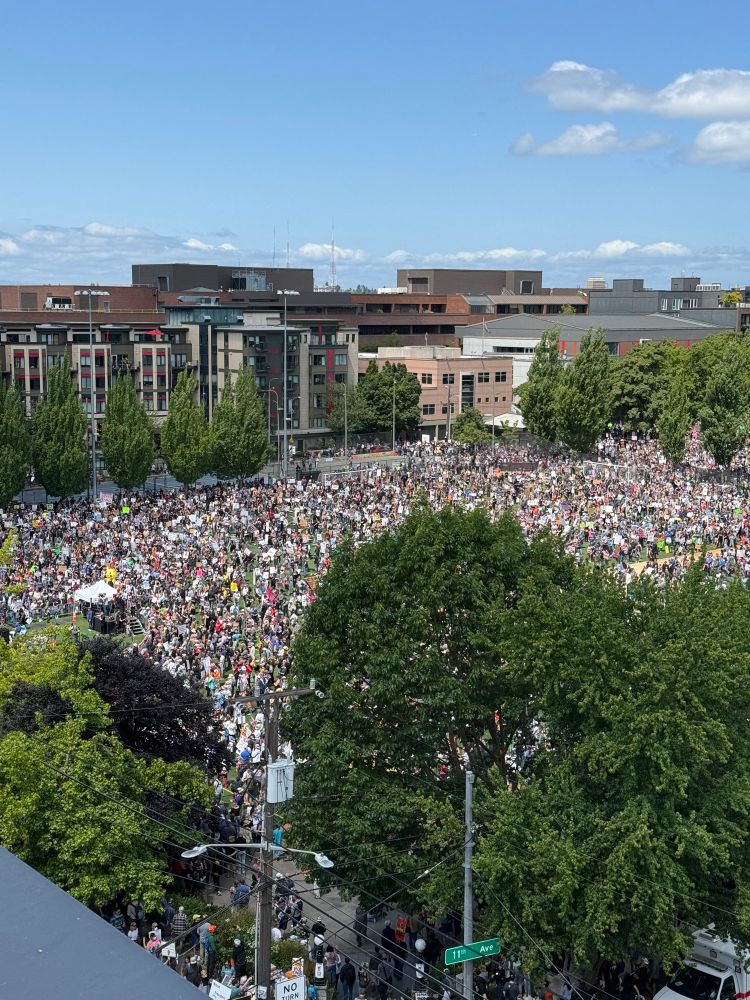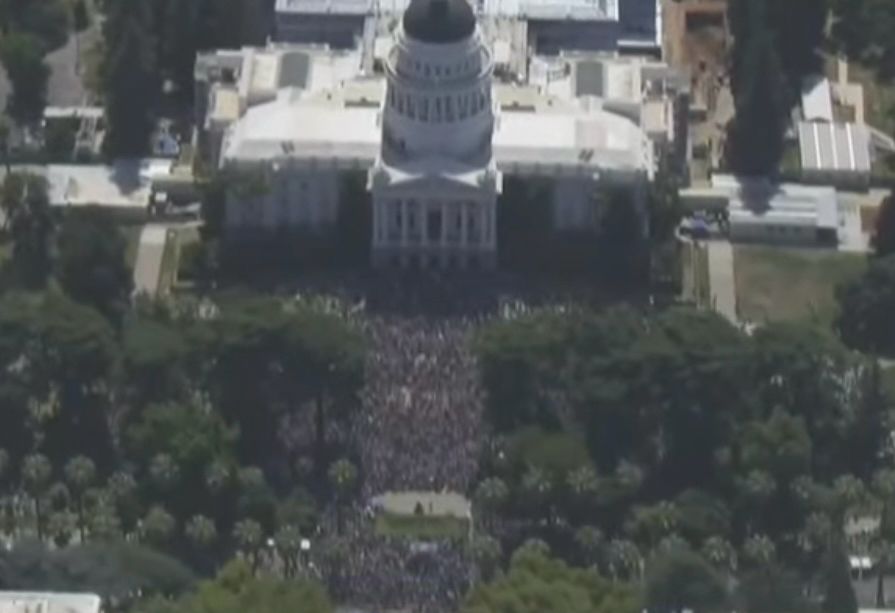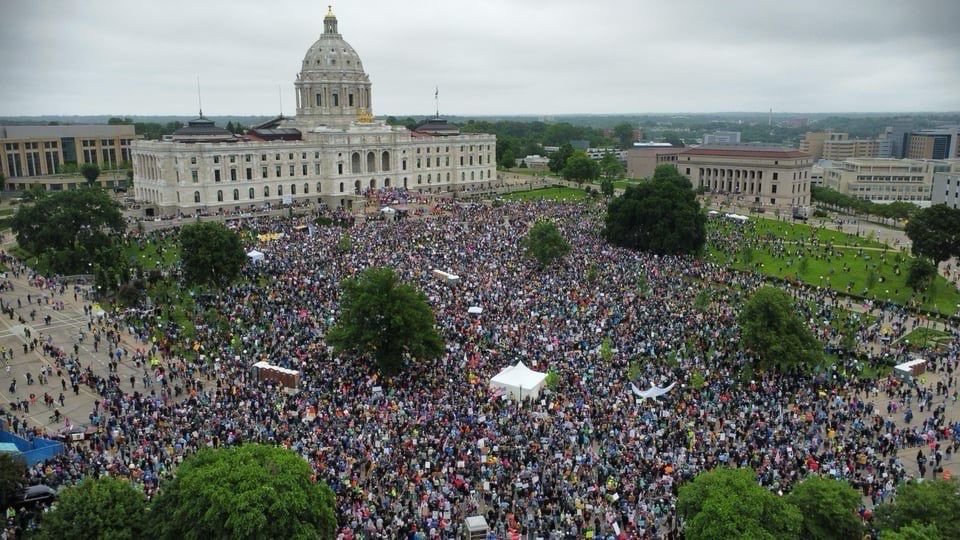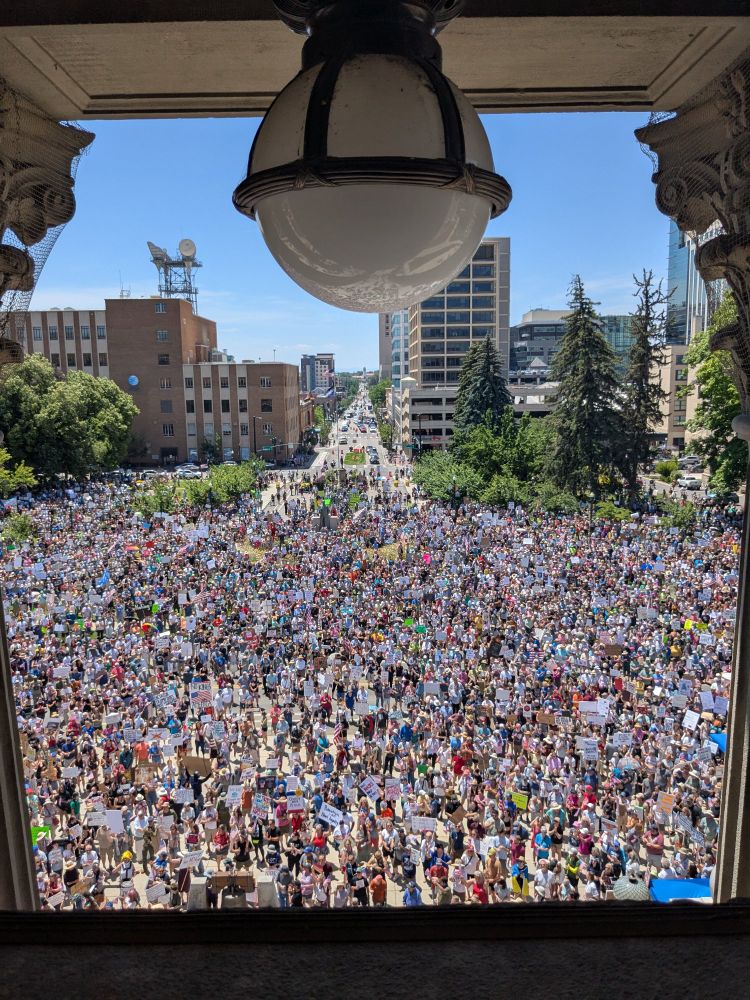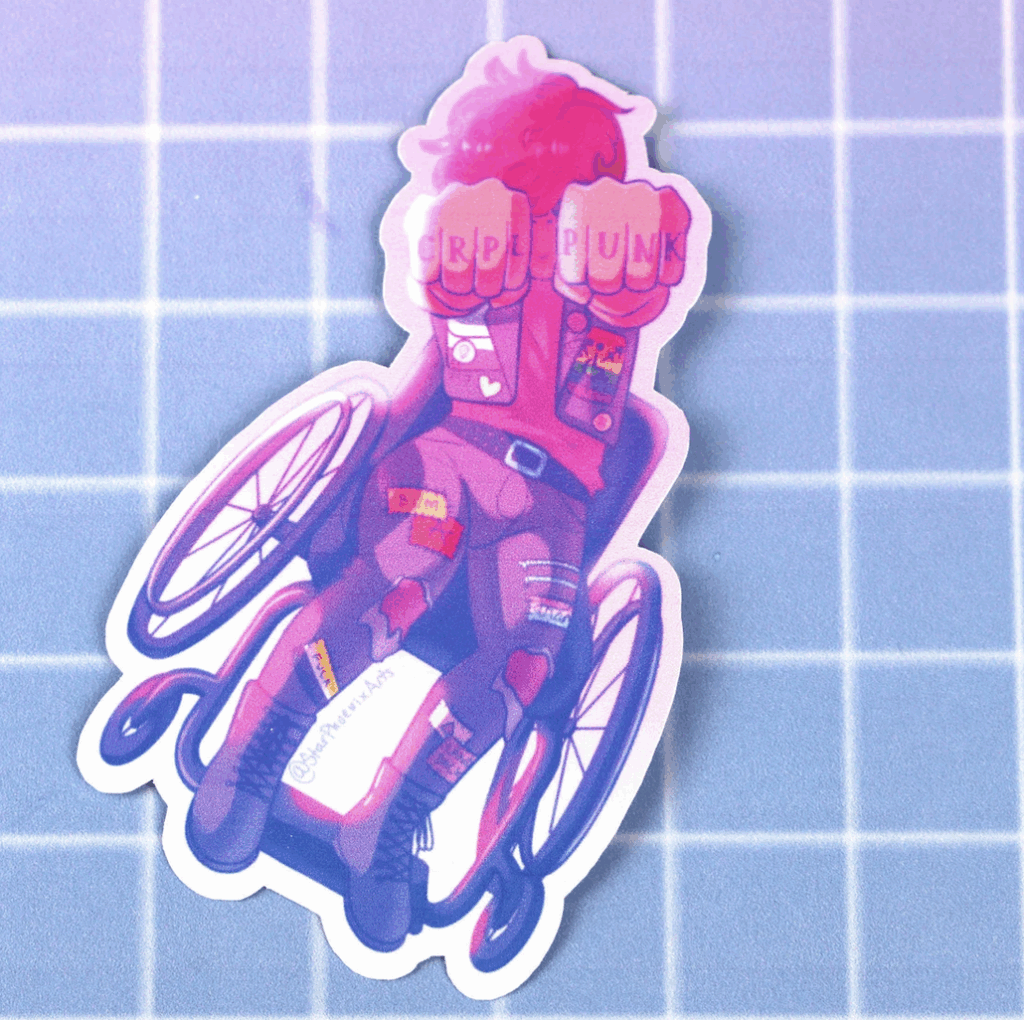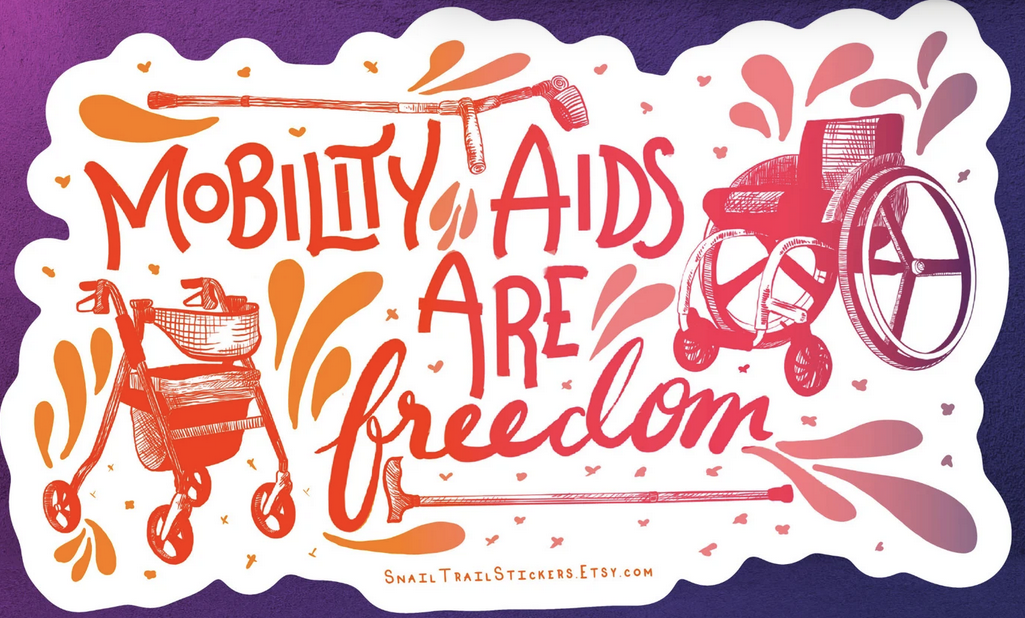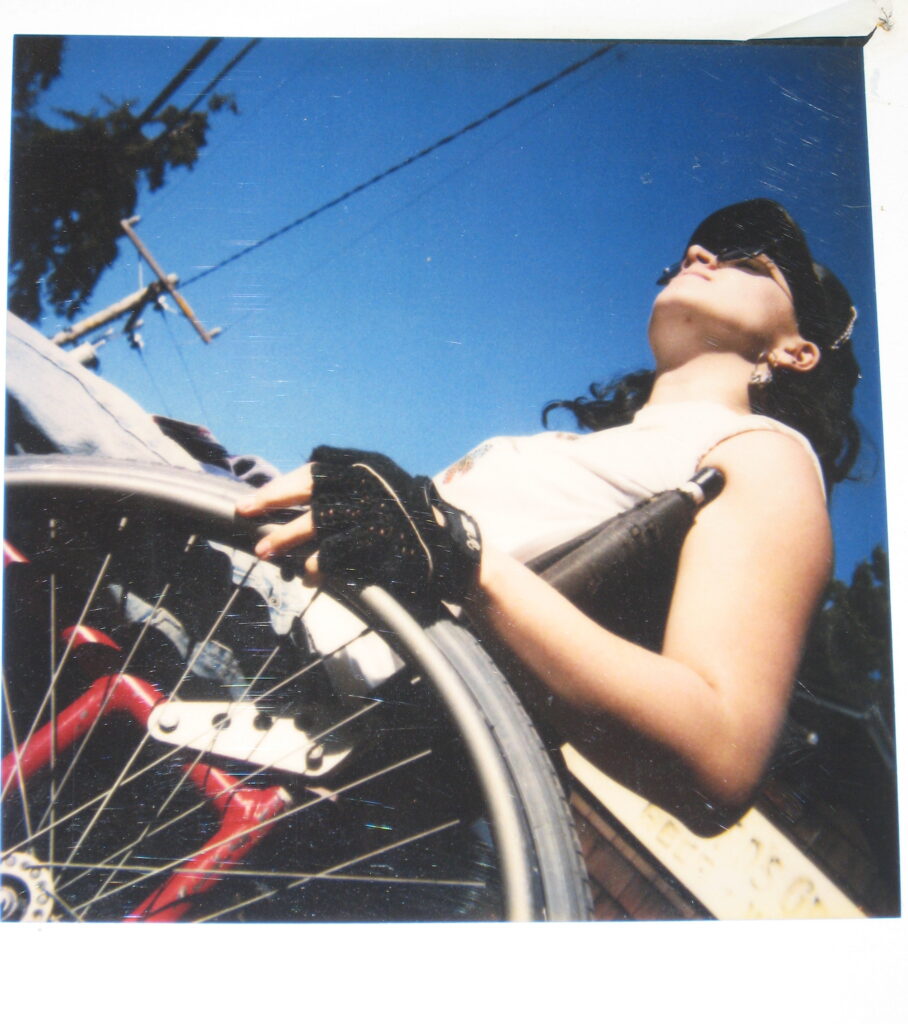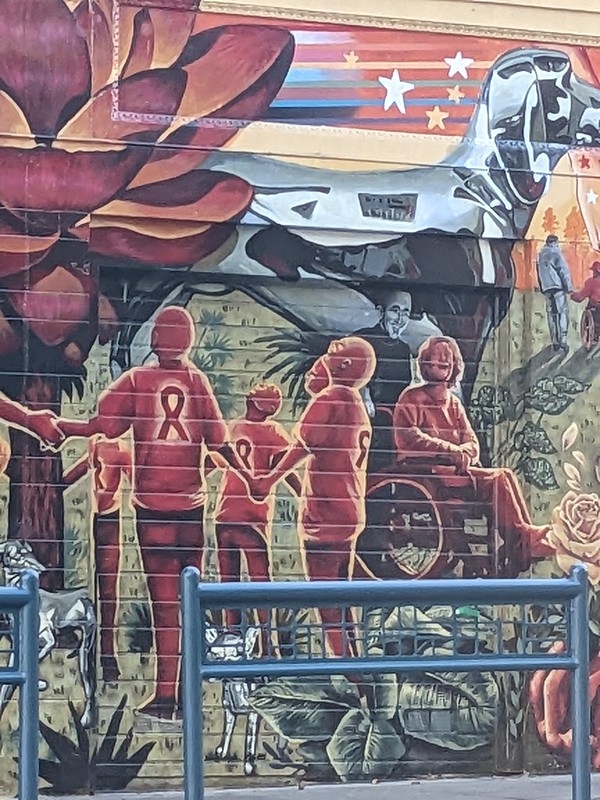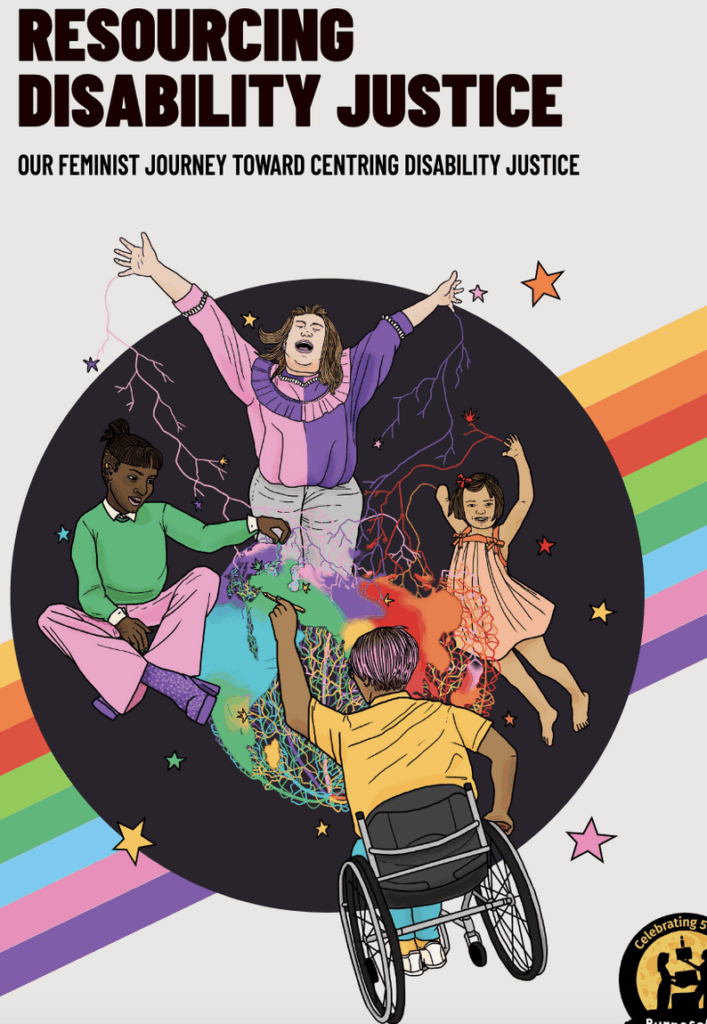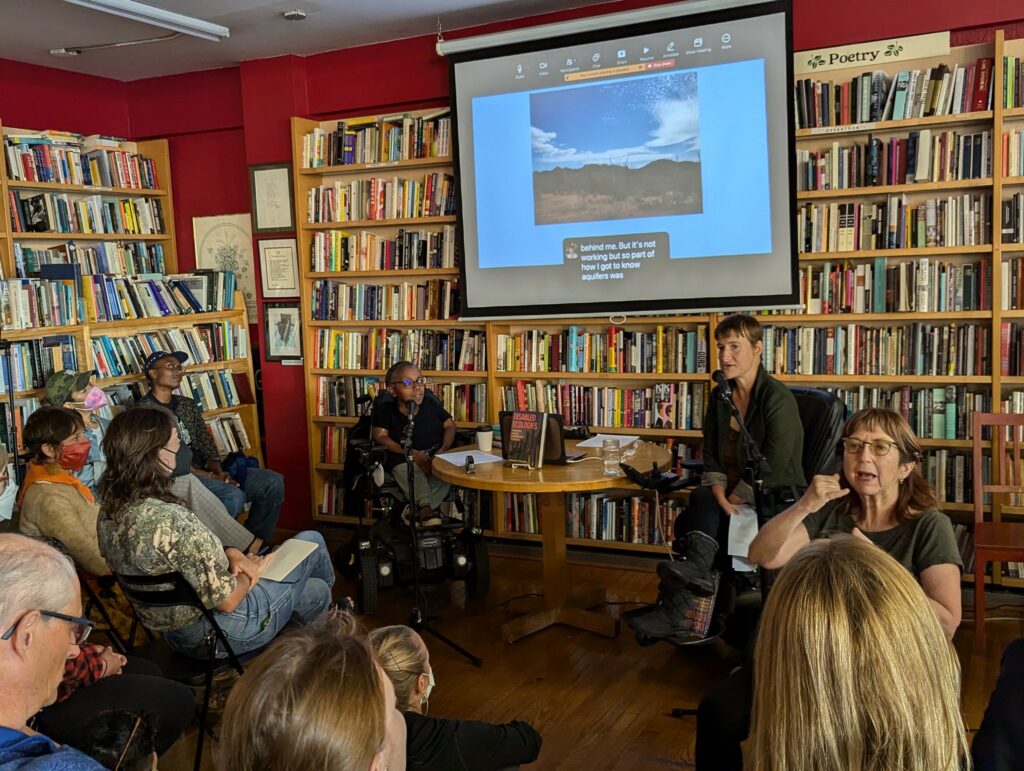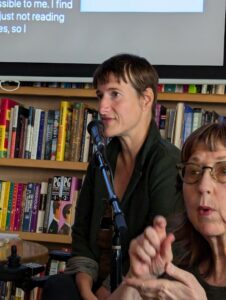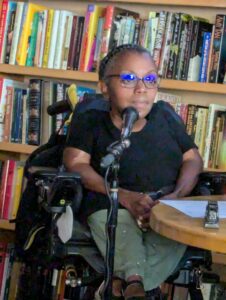Earlier this week I went to the Metropolitan Regional Commission’s Accessible Futures conference and had a great time being in community with so many badass disabled folks & talking with people from all over the Bay Area who work in transit. The main track for the conference was on transit, and there were other discussions on housing, employment, and climate. I want to give a high level summary and maybe a few critiques along the way (shocker!)
The MTC was created by the California Legislature in 1970 to plan, finance and coordinate the Bay Area’s transportation systems, and now includes other regional issues, including housing and development. They get funding from many sources, including 700 million/year in bridge tolls, and distribute or help move over 1 billion per year to other agencies. 9 counties! Many cities and towns! I think 27 different transit agencies too!
In short, what they are, who they are, and what they do is super complicated!
I enjoyed hearing the presentation of MTC’s 4 year plan. Here is a PDF of it: https://mtc.ca.gov/sites/default/files/documents/2024-12/MTC-Coordinated-Plan-2024.pdf.pdf They sound committed to improving accessibility and are starting with a unified design for signage and wayfinding across all the regions and forms of public transit.
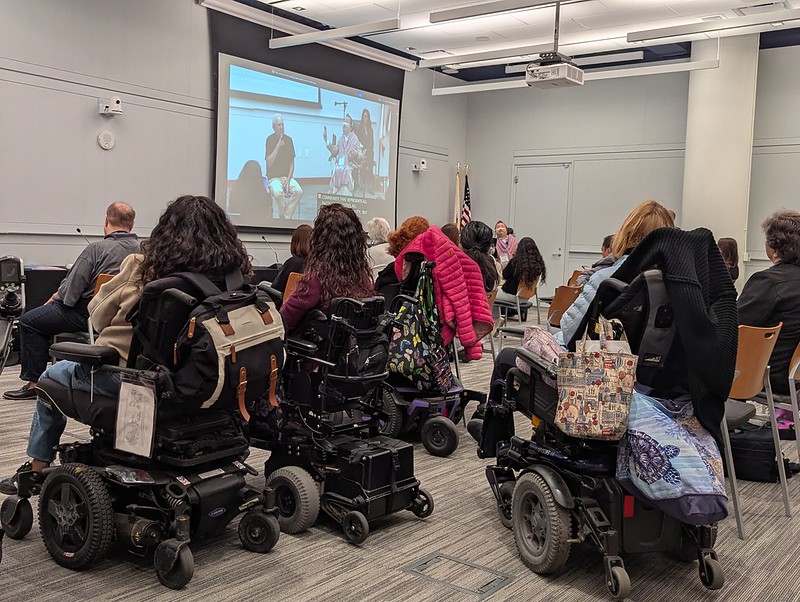
Each section of the day’s discussions kicked off with a sort of panel of people with related expertise or experience. Often that was simply a short self-introduction and then the rest of the time was taken up by carrying the mic around to us in the ‘audience’ of other participants.
This worked well enough to get ideas flowing and people talking. But I would have liked to hear more thoughts and discussion from the panelists. Or if we were going to hear from everyone in the room, just do it round robin style and give everyone an opportunity to introduce themselves and their work or experiences, and to speak further. We had the time!
My impression of the most important points raised in the transit track:
1) Defragmentation of services
Reliable, same day scheduling, with single-seat rides, are a big goal.
Moving across “regions” is an expensive, confusing experience for disabled people on public transit. Paratransit users have many inequities in services. That is, rather than scheduling a ride a day or more in advance, then having to transfer to a different paratransit agency/vehicle because you are going from one city to another or one county to another. As an imperfect solution, having subsidized ride-hailing (Uber/Lyft/Waymo) rides can improve things quite a lot for disabled riders’ experiences.
2) Equitable fares.
Everyone should have reasonable costs to get from point A to point B. Paratransit users are still facing unequal costs depending on the region or municipality they are traveling in. We pay more, and we get less, or worse, service in many cases.
3) Respect for our time and agency.
This is somewhat nebulous, but many of the pain points I heard articulated from the crowd hinged on disrespect for our time.
* The timing on paratransit rides often doesn’t work, as drivers arrive early or late. A paratransit ride might be shared with someone else so scheduling is imprecise to start with and we can only book a goal for either pickup, or dropoff, time but not both.
* A blind person trying to get schedule information shouldn’t have to wrestle for 10 minutes with a PDF to find out when the next train is when a sighted person can glance at a display.
* A wheelchair or walker user gets off BART where there are elevators at both ends of the platform (19th St. Oakland I’m looking at you) from the platform to the concourse, but only one side has an elevator to the street, so if you pick the wrong one you have to traverse an entire city block underground, twice.
We have jobs, appointments, school, picking up our kids, and so on to get to. Wasting our time is huge inequity that makes it hard for us to be integrated into the life of the society around us.
4) Respect and communication in general
Many people described bad experiences that could improve through better and consistent training for all transit staff. This should also mean an accessible and usable complaint process that provides information and feedback to the person filing the complaint.
5. Removing barriers
– or continuing to remove them. For example increasing level boarding opportunities and ramps. Ramps don’t break (or at least, not as fast as lifts and elevators do.) Designing new infrastructure so that it doesn’t have obvious weak points. Multimodal points of communication for things like schedules, stops, and navigation for blind, Deaf, hard of hearing, Deaf-blind, IDD folks, and others.
6) Disaster planning
I got the sense that the conference runners felt that disaster planning was out of scope for our discussions about transit, while many participants had strong feelings it WAS a transit planning issue. We see over and over that when a disaster strikes, able bodied people evacuate while disabled and elderly people are left to die. And the responsibility for planning for these situations is left to us individually, who may have the fewest resources to turn to. Is this regional transit’s problem? Not them alone but it would be helpful of course if transit had more capacity to transport disabled people as seamlessly as it can everyone else.
Given those points we raised, how can our convening help or influence the decisions that city government, transit agencies, and others make in the future?
As the organizers or more precisely the various consultants they hired to facilitate the conference repeatedly asked, But what about NEXT STEPS? Look, obviously the next steps are complicated and to start making them we would need to understand the giant web of funding, regulations, paratransit agency procurement policies, and local politics of every governmental body in the Bay Area.
When you bring together a lot of disabled people to talk about things like transit and housing, you are going to get complaints and demands that may not slot into what is possible from the political landscape so this process needs to be heavily 2 way.
The wayfinding and signage consolidation plan actually sounded reasonably good to me, like, an obvious improvement for a huge number of people.
The most positive stories I heard from people were about paratransit moving to ride-hailing services like Uber and Lyft. Feelings are very mixed as we are aware of the bad labor practices of these companies and the climate effects of continuing to commit to “car first culture”. AND YET. Everyone speaking up who mentioned these programs said that they were LIFE CHANGING. For the first time in someone’s life having access to on demand transportation that comes with some (even if inadequate) structure. We can assert that, I think, and also help to fight for the rights of the drivers to decent treatment and a living wage.
Some cities like Richmond and I think Hayward have programs where if you qualify for paratransit you can use it to take Uber (or Lyft?) which in THEORY includes a wheelchair accessible vehicle or WAV. You pay a small cost like $3 per ride, then the local govt. picks up some amount over that, and anything extra over a cap (say, $19) the rider pays out of pocket.
I shared many positive examples during the discussions and in personal conversations – here’s two I can remember:
1) For years I reported a particular very terrible and unsafe curb cut, in a busy part of downtown, via the SF 311 app. Finally, someone from SFMTA contacted me via email and I think we may have even had a call, and they shared a very fascinating spreadsheet with me, that listed all the curb cut complaints they have gathered, with details like cost estimates to fix, travel in that intersection, and the availability of alternate routes of travel. That act of sharing data — that should or couse be, I think, public data! — turned my frustration and anger to a feeling of wanting to collaborate and help, as well as understanding how the agency was making decisions about priorities.
2) Over the last several years (maybe 5 or 10, honestly I can’t be more precise) SF MUNI bus drivers have gotten better and better at handling wheelchair using and other disabled riders. I mean me, but also my observations of their interactions with other riding with me in the front of the bus. It used to be, out of a 4 bus journey across town, ie going somewhere and back with 1 transfer, one out of those 4 rides would try my very soul and I would end up sad and enraged at how I was treated (or how others were treated too of course). That has VASTLY improved and I’d put it more like 1 out of 30 rides being super enraging and maybe a few more having some point of normal frustration. It’s so, so much better. I don’t feel the drivers are angry and hostile, they don’t seem to be worrying too much about the time it takes to deploy the ramp, they don’t pass me up as often, and so on. Notably, they are way more proactive to get other riders to cram in or move if the front of the bus is crowded. And they have stopped (mostly) scolding and yelling at me about what they think I am supposed to be doing. (Like, where I wait to board the bus, or even, whether I SHOULD be riding the bus at a busy time of day.)
And, I also told stories one on one about my experiences actually trying to hail and use an Uber, Lyft, and Waymo WAV (wheelchair accessible vehicle). When it works, it works. When it doesn’t you have no recourse. I can take a (free, currently) Waymo WAV within the boundaries of San Francisco, despite the almost non-functional “app” – which lacks info about who is coming and where they are and their ETA — usually, they arrive in 20-25 minutes as for some reason they are always parked in Marina Green, a place I never go on the far side of town across maximum traffic. I can get a costly (price gouging disabled people) Uber, FROM San Francisco, in maybe 10-15 minutes pickup time, to go across the Bay to Richmond to visit my parents, but then I won’t be able to get back because their coverage just doesn’t exist (it will promise it’s connecting you with a WAV, then it doesn’t.) And, their rear loading vans put a wheelchair user in a very weird position, basically at a steep angle lying on my back since I roll up the ramp and then stay … on a steeply tilted ramp. It is unacceptably uncomfortable to me. (No staff of the transit agencies had ever heard these complaints?!) Lyft sometimes has an OK experience but mostly lacks coverage and availability. (Wild that these stories were news to anyone…)
This leads me to my next point which is that when you get a lot of us in the room to talk about this stuff you are asking us to talk about stuff that is actually traumatic. So the direction the discussion goes is often “freaked out trauma dump”. It is unavoidable.
We have to navigate that up front. It is a fairly intense request to ask people to process traumatic experiences (this comes up a lot with health care for example) and then to immediately come up with systemic solutions. They don’t really go well together, you need to acknowledge that dredging it up is painful (even harmful) and make some point of transition to talking about things in a different way. Not just like, some able bodied consultant facilitators going, “OK well enough with the list of grievances, how about the next steps?!” Dude. No.
Disabled, or let’s say, disability justice informed, organizers would not have been so unfeeling and would have held space for our intense feelings, our rage, our fear, our sadness, and hold out hope for solidarity and healing.
My final point, I think, is about the end of the conference which was framed as taking some of the “notes” or points from the 2 days of discussion, and using them to write a group “Resolution”. Like a political statement beginning, Resolved, we the undersigned, affirm our fundamental right and demand blah blah.”
There were so many problems with how this was approached.
First, I am sorry to be harsh, but the document given to us as the draft of the Resolution was like someone, or some AI, took an assortment of bullet points and made them into sentences with no logical relationship of one point to another, nothing given emphasis or weighted, and barely readable. I love a semi-colon, but Christ! It was a giant list in “prose” that as an English composition college professor I would have given a D or maybe a C-.
Then, this document was handed out to us as 24 pages of large print text , or a qr code where we could get a PDF. Then someone tried reading it out loud line by line asking for “edits” or commentary after each sentence.
That is not a viable way to edit or write a document collaboratively!!!
And I am not sure what anyone thinks would then happen to that document. No government official is going to wade through all that. At best some mayor’s office intern is going to pipe the PDF into an AI to summarize it in bullet points.
We could have each written (with assistance if needed) maybe 3-5 points we wanted included, put them on actual post it notes and shove it up on a white board. Not ideal access but better collaborative construction of ideas. And then giving us time to both contribute those points (after the conference!) and to have space to read and comment on any document created from them. For accessibility, it isn’t gonna happen in real time.
Then when Melissa sitting next to me (from TheARC) asked about plain language translation, the facilitators didn’t have a clue what that even meant.
I had serious, serious doubts about, well, what to me looked like LLM generated sections of the document. If I’m right about that, I think it was both unnecessary and inappropriate.
It was unclear what was going on, overall. A discussion, yes. A group construction of an advocacy platform? Feedback to the MTC on their plan? Suggestions for the next 4 year plan? In what way did this actually result in some sort of engagement in a democratic government process? (Unclear to me but I am a noob in this space so bear with me.)
It was kind of sad to see this fizzling end to the day, pulling out all the joy, momentum, and sense of connection I had felt compared to the rest of the conference which was very nice and conducive to good conversations. I have a slightly better idea of what kinds of advocacy and oversight and planning agencies and committees are out there, that I might join if I have the time (or pay) to work on these issues directly.
Overall, I’m so glad that I went and participated. The goal was to dream big and make connections, and I think we all succeeded in that even if it didn’t translate to a “political document” about what we “want”. I put “want” in quotes because, We don’t need a new manifesto to assert the rights we as disabled people already have in law.
